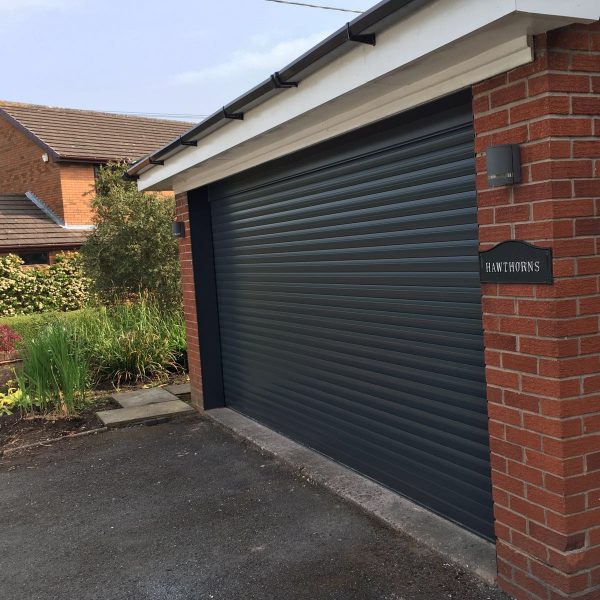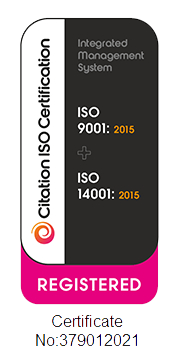What to do If My Electric Garage Door Won’t Open or Close
These days, many homes and businesses have an electric garage door installed.
Providing the user with a whole host of benefits, including increased security and convenient operation, they’re a product that is typically used on a day-to-day basis as you go about your daily tasks.
Electric roller garage doors are among the most popular types of electric doors on the market, and while they offer numerous advantages to a property, it’s also normal for them to suffer from wear and tear over time.

One problem that can occur is finding that your electric garage door does not open or close.
This is an issue that needs to be solved as soon as possible, because it poses a security threat to your entire property and places the contents of your garage at the risk of theft.
If you find that your electric roller garage doors are not closing, there are a number of things you can do to rectify the problem.
What To Do If My Electric Garage Door Won’t Close
together a handy list of some of the troubleshooting measures you can take if your electric roller garage door is not closing.
These include:
Check The Power Supply
The first thing you should do is make sure the power supply is still functioning. If not, this will demonstrate a problem with your property’s power rather than the door itself.
Similarly, check the plug to make sure it has not been removed from the socket to be used for something else.
Check The Sensors
Often, a garage door not closing all the way indicates there is a problem with its sensors. As well as smoothly allowing the door to open and close, these sensors also detect obstructions such as people, pets and vehicles, so it’s essential they’re working properly for safety reasons.
With some older doors, there is a single beam safety sensor at the bottom of the door. Usually, this is called the photocell, and these sensors may have become dirty or misaligned which will impede the operation of the door. To resolve this problem, wipe the reflective plate and front of the sensor with a damp cloth and check to make sure they are in line with each other. This is usually signified by a light on the sensor itself.
Most modern doors will come with a safety edge as this is the current legislative requirement. In these instances, there are leading edges, safety edges and light curtains.
Light curtains are not the normal choice for roller garage doors but are used by some suppliers, fundamentally these are the same as a single photocell that the old doors used to have but they are placed at strategic points down the guide runners to form a net over the back of the door. The thing to look out for on these is faulty cells which will cause the product to stop working, dirt on the channels and also misalignment. With this in mind, the remedies are the same as the single photocell.
For leading-edge safety systems, there are three types commonly available, optical, conductive and motion sensor.
Optical sensors use an optical photo beam like old doors. This beam is sent through the rubber on the last slat of the door with a send-and-receive unit rather than a reflector. Check for rodent damage to the rubber, deformities in the rubber, water ingress and lights on the box to signify a sensor problem. A sensor problem will usually be down to the battery in the base rail that needs replacing or a loose wire.
Conductive sensors use two wires that run through the base rail rubber which, in contact with an obstacle, come together to send a signal to the receiver box, the things to check for here are the same as with the optical unit in the closing of the curtain.
Motion sensors are units that use either magnets or algorithms mainly working on a pre-set-up run time that dictates how long the door takes to close and at what points it should pass a certain pre-set point. The things to look out for with these are changes to the speed of the motor, the build-up of dirt and debris in the guide runners causing jolts or delays and the reset of the initial run timer.
As well as this, check for any indicator lights on the receiver box or beeping sounds coming from the box on the wall. These things could also show a sensor issue.
Inspect tracks and rollers
Roller garage doors operate on tracks and rollers which helps them to open and close in a slick manner. If these tracks become damaged in any way, it could result in the door not being able to properly shut.
Inspect all of the door’s tracks and rollers, removing any obstructions if you come across them. If you spot any significant damage then you may need to contact a professional garage door company for support.
Adjustment Of Motor Limits
Adjusting limit screws is another thing you can attempt in order to get your door correctly closing again.
Before you do this, however, check the motor fixing on the header plate and the other end of the barrel to ensure there is no damage or irregularities.
There are two types of limits on motors, and adjustable screw or a push limit.
To adjust limit screws remove the cover on your garage door opener and locate the two plastic screws that are usually labelled ‘up’ and ‘down’ with a straight arrow.
Using a 4mm Alan key, adjust the ‘down’ screw in quarter-turn increments. After each adjustment, check if the door will now close. Make sure to refer back to the motor adjustment in the fitting instructions.
To adjust a push limit motor, you need to locate which is the top limit and which is the bottom. Then, push them in to allow free moving. When you find the top limit release switch, repeat for the bottom limit and check to make sure you’re happy with the finishing positions.
Disclaimer: We always recommend this is done by a professional as the door may fall down causing injury or damage.
Change Your Remote’s Batteries
Most electric garage doors operate at just a touch of a button by using a remote control.
Often, if you find your door not closing, it will be a simple case of replacing the batteries in your remote. Check this by pressing the button on your remote and seeing if the light comes on. If this is the case, the battery may be functioning and you have another issue.
It’s also worth checking the sensor unit at the bottom of the door, too. Sometimes this also has batteries that may need changing. These must be changed with a like-for-like version (for example AA 1.5v should not be used instead of AA 3.6v).
Why Won’t My Roller Garage Door Close
As highlighted in the section above, there are several reasons why a roller garage door may not be closing properly.
The most common causes include:
- Faulty sensors
- Obstructions
- Damaged tracks and rollers
- Broken straps
- Expired remote batteries or the base rail unit
At Rollerdor, we offer our customers across the UK a comprehensive garage door service. In addition to the manufacture and supply of quality roller garage doors, we can also provide you with a wide range of accessories that can enhance your garage door and potentially assist with any issues relating to it not closing. Our team may ask you to email over photos of certain parts of the door to help us diagnose the problem.
To find out more about what we do, get in touch with the Rollerdor team today.
Garage door price calculator
Want to get a new garage doors quote? Use our price calculator to get a no-hidden-fee price and order online!





